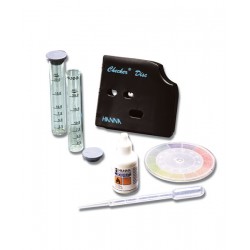

HI-38001 Sulphate - Range (100-1000 mg/L) (1000-10000 mg/L)
In Stock 1 Item available
HI-38001
Sulphate is widely present in natural waters.
Titration is used to find the concentration of an identified chemical in a solution (e.g., water).
In our standard titration kits, there will be a titrant solution that is added to the liquid (e.g., water) to be tested to make it change colour. The reagent is then added under monitored conditions.
Sulphate is widely present in natural waters. It is not toxic but has to be kept below a certain threshold because it imparts an unpleasant taste to the water.
The concentrations are particularly higher close to mine run-off water. Sulphate is also widely used as a nutrient in agriculture. The Hanna instrument kit covers an extensive range for measuring sulphate concentrations.
During testing, when colour change is achieved, under careful conditions - usually using a burette – the reagent is added, drop by drop, until the solution turns to the colour required. The user will then count how many drops of reagent were used to achieve complete colour change. The number of drops used will determine the chemical concentration and results can be found in the manual included.
Read More
| Method | Titration | |
| Range | 100-1000 mg/L 1000-10000 mg/L | |
| Smallest Increment | 10 mg/L 100 mg/L | |
| Chemical Method | Barium chloride | |
| Number of Tests | 200 | |
| Weight | 640 g |




















